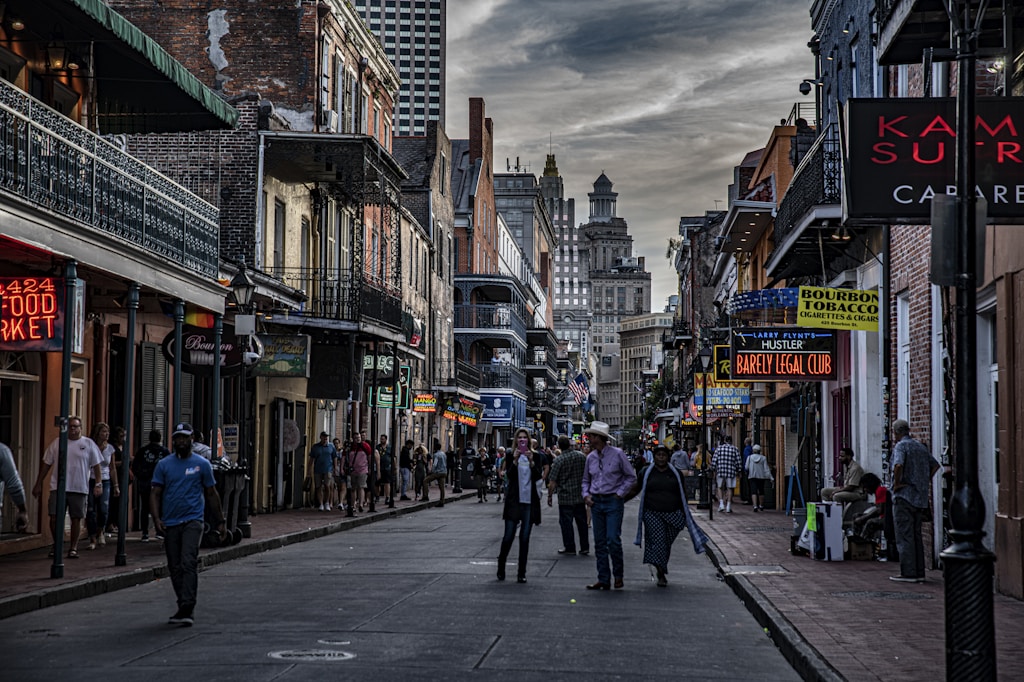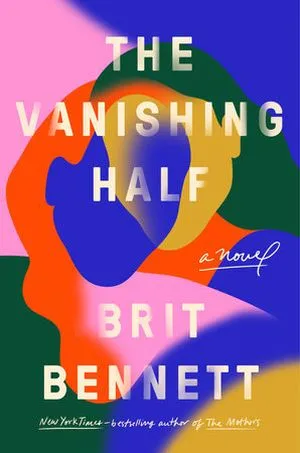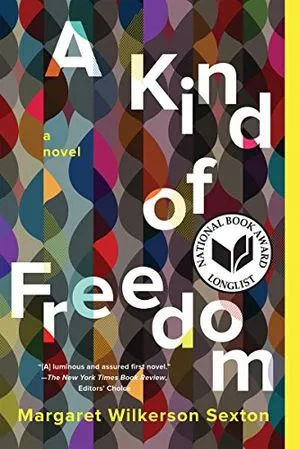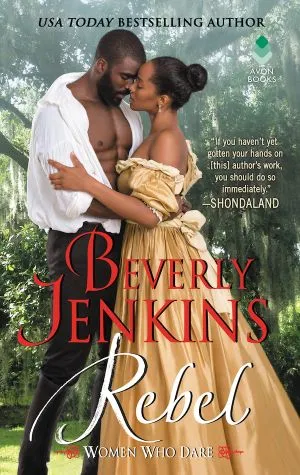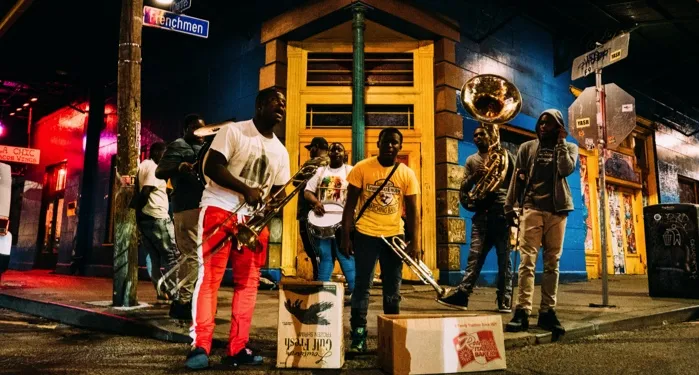
Literary Tourism: New Orleans, Louisiana
During autumn in New Orleans, the nip in the air makes the chicory coffee more comforting and the shadows of the French Quarter a bit more magical. One-hundred-year-old oak trees line the streetcar routes that run along the Mississippi River, towering Victorian homes along St. Charles Avenue twinkle at dusk, and after a couple Sazeracs, the soulful rhythm of the Crescent City sets even the most uptight visitors at ease.
Beyond the revelry of Mardi Gras and the debauchery of Bourbon Street is a city brimming with literary history. From William Faulkner to John Grisham, New Orleans is home to writers, readers, and fictional characters that span genres and generations.
New Orleans Literary Locations
Much of New Orleans’ rich history—including architecture, restaurants, and customs—involves literature and writers, both fictional and real. However, many of the literary locations in New Orleans are associated with white writers, a stark contrast to the racial demographic of the city and the long-lasting influence of Black poets, writers, artists, and musicians on the city.
The Pontchartrain Hotel
Along oak-lined St. Charles Ave. is the Pontchartrain Hotel, a historic establishment in the Garden District. The open-air rooftop bar of the hotel is called Hot Tin, named after Tennessee Williams’s three-act play Cat on A Hot Tin Roof. The outdoor area has panoramic views of downtown New Orleans and St. Charles Avenue and bookish cocktails such as the gin-based This Side of Paradise and The Jack Rose, a popular drink in the 1920s and 1930s that appeared in Hemingway’s The Sun Also Rises.
The Ignatius J. Reilly Statue
Ignatius J. Reilly, the protagonist of John Kennedy Toole’s novel A Confederacy of Dunces, stands in all his disheveled glory on Canal Street in New Orleans. Toole’s book was published 11 years after his suicide after his mother pushed for its release; Toole was posthumously awarded a Pulitzer Prize for fiction in 1981. The Confederacy of Dunces is often regarded as having one of the best depictions of New Orleans, including local dialects, in modern literature.
Hotel Monteleone
Since 1886, Hotel Monteleone has stood at 214 Royal Street, home to the famous revolving Carousel Bar and Lounge. In the hotel’s 134 year lifespan, literary icons such as Ernest Hemingway, Sherwood Anderson, William Faulkner, and Truman Capote, who often told the press he was born inside the Hotel Monteleone, made the hotel their home when staying in New Orleans. The hotel is featured in Eudora Welty’s short story The Purple Hat, and Tennessee Williams’s play The Rose Tattoo. Contemporary writers such as Anne Rice, John Grisham, and Stephen Ambrose have all frequented the hotel. (In fact, 214 Royal Street was the address of the main character in the first of Anne Rice’s Gothic fantasy trilogy, The Witching Hour.)
Hotel Monteleone was designated as an official literary landmark by Friends of the Library Association in 1999 and today, guests can choose to stay in “Literary Suites” named after famous former guests.
Gallier House
Let this autumn season be the time to read Anne Rice’s Interview With The Vampire (then watch the movie version starring Tom Cruise and Brad Pitt). The 19th century Gallier House at 1132 Royal Street supposedly served as the model for the home of vampires Lestat and Louis in Interview With The Vampire. Today, the house is a museum dedicated to the famous New Orleans architect James Gallier Jr. Fans of Anne Rice can also view her former Garden District home at 3711 St. Charles Ave.
The Many Homes of Tennessee Williams
The famed American playwright Tennessee Williams originally moved to New Orleans to write under a stipend from the Works Progress Administration. In the years that followed, Williams would move often in the French Quarter and neighboring areas. One of his early homes at 722 Toulouse Street was the setting for his 1977 play Vieux Carré. Williams lived at 632 1/2 St. Peter Street when he wrote the first half of A Streetcar Named Desire, which is set in New Orleans. (You can still ride on the streetcars in New Orleans, though the namesake Desire line is no longer operational.) Most of Williams’s writing was done at 727 Toulouse Street in a patio room, and over the years he stayed in several New Orleans hotels including The Pontchartrain Hotel, Hotel Monteleone, and the Royal Orleans Hotel.
New Orleans in Literature
Streetcars, cafes, haunted hotels, and Southern food: few places provide such a colorful background for novels as New Orleans.
Dinner at Antoine’s by Frances Parkinson Keyes
Antoine’s has been a mainstay of the New Orleans culinary world for 180 years. Frances Parkinson Keyes wrote her murder mystery Dinner at Antoine’s in 1947, followed by Crescent Carnival in 1952. Dinner at Antoine’s follows the suspicious suicide of a young girl Odile Laland, who, 30 hours prior to her death, was dining at Antoine’s. Much of the story involves New Orleans history, culture, and customs. Visit Antoine’s today for the classic Louisiana fare and 25¢ lunchtime martinis.
The Vanishing Half by Brit Bennett
Spanning several cities and eras in American history, The Vanishing Half tells the story of identical twins Stella and Desiree Vignes. After witnessing their father’s murder, the twins flee to New Orleans. The story takes readers from New Orleans in the 1950s to Los Angeles, Washington, D.C., and Mallard, a fictional small town in southern Louisiana. The bestseller explores colorism and the weaponization of whiteness while intertwining an emotional story of family secrets and identity.
A Good Scent from a Strange Mountain by Robert Olen Butler
New Orleans has one of the largest Vietnamese populations in the U.S. In 1975, thousands of Vietnamese refugees fled south Vietnam and settled in Versailles, an area in east New Orleans that has since been associated with Vietnamese American citizens. Robert Olen Butler’s A Good Scent From a Strange Mountain is a Pulitzer Prize winning collection of short stories narrated by Vietnamese immigrants as they adapt to life in New Orleans and the United States as a whole, highlighting an often overlooked demographic of New Orleans locals.
The Pelican Brief by John Grisham
John Grisham’s 1992 legal thriller The Pelican Brief moves between Washington, D.C., and New Orleans. With all the makings of a Grisham blockbuster—assassinations, the Supreme Court, ambitious reporters—The Pelican Brief is a perfect airplane read for visitors en route to New Orleans. Catch the film version of Grisham’s The Runaway Jury starring John Cusack and Rachel Weisz for scenes shot entirely in New Orleans.
A Kind of Freedom by Margaret Wilkerson Sexton
Set in New Orleans after World War II, in the 1980s, and following Hurricane Katrina, A Kind Of Freedom is a powerful commentary on past and present Jim Crow and racial disparity in the South. The story follows Evelyn, her daughter Jackie, and Jackie’s son T.C. as they navigate life over the past decade, weaving their story into the backdrop of an ever-changing New Orleans. Sexton’s other novel, The Revisioners, is also set in New Orleans.
The Awakening by Kate Chopin
First published in 1899, The Awakening is set in New Orleans and on the Gulf Coast, specifically Grand Isle, Louisiana, a popular vacation spot for residents from the city. Chopin’s novel offers a compelling challenge to gender norms of the time—the protagonist Edna Pontellier finds herself pursuing independence, openness, and eventually, solitude. The book celebrates emotional, sexual, and physical separation from stifling spousal ties and conventional expectations of women of the time.
The Feast of All Saints by Anne Rice
Following the success of Interview with the Vampire, Anne Rice’s The Feast Of All Saints follows gens de couleur libres, or free people of color in New Orleans right before the Civil War. The novel intertwines four people in a world of slavery, oppression, and a social subordination that reflected the racial injustices of the early 19th century.
Rebel by Beverly Jenkins
To match the heat of New Orleans in the summer, Rebel, a historical romance novel from renowned writer Beverly Jenkins follows a steamy love affair between Valinda Lacy, a woman dedicated to helping the South rebuild following the Civil War, and Captain Drake LeVeq, an architect who is drawn to Valinda’s strength and determination. Rebel is the first novel of Jenkin’s Women Who Dare series.
New Orleans Bookstores
A stop over to these classic New Orleans bookstores means visitors will never be without a book in hand.
Faulkner House Books
In 1925, William Faulkner lived in the very building that is today’s Faulkner House Books, a bookstore dedicated to new and used books and rare editions including those of Faulkner himself with a focus on Southern literature. The bookstore is located in an alley behind Jackson Square in the French Quarter, a stone’s throw from Cafe Du Monde and the supposedly haunted St. Louis Cathedral.
Tubby & Coo’s Mid-City Bookshop
Tubby and Coo’s, the self-proclaimed “nerd mecca” of New Orleans, is an LGBTQ-owned store specializing in science fiction, fantasy, queer literature, graphic novels, children’s books, and board games. A huge plus: they have anti-racist action plan and participate in partnerships with local schools to coordinate author visits.
Community Book Center
Located in the Seventh Ward, Community Book Center is a bookstore stocked with primarily African-inspired literature, gifts, clothes, and art. The space more than a bookstore—it’s also used for performances, community gatherings, and book signings.
Beckham’s Bookshop
The owners of Beckham’s Bookshop have operated this bookstore in the French Quarter since 1967. The bookstore’s floor-to-ceiling shelves stock thousands of second-hand books with a focus on New Orleans and Louisiana history. They also allow dogs and beer inside—nothing better than drunk book shopping with a Good Boy in tow.
For more literary landmarks in New Orleans, check out A Booklover’s Guide to New Orleans by Susan Larson.
Read more on Book Riot:
My Literary Mardi Gras: The Stories New Orleans Inspired Me to Read



